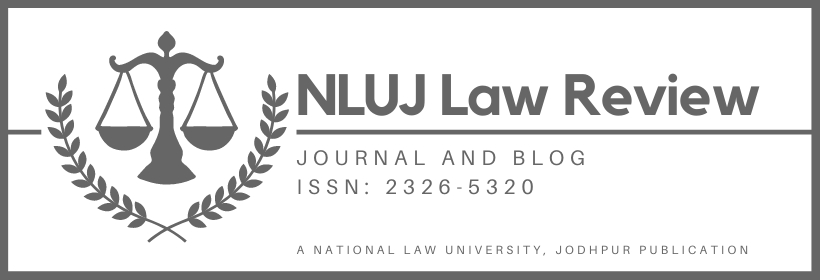It is no secret that the cost of war now goes much beyond material loss and social displacement. Colossal rates of environmental degradation are an additional outcome of contemporary warfare. More significantly, environmental damage, which unquestionably goes beyond the borders of nations that have experienced a conflict, can endanger people’s lives and means of subsistence long after peace agreements have been signed. The Ukraine-Russia crisis acts as a paramount instance of relevance demonstrating the adverse consequences of conflict on global natural resources. The Ukraine crisis has put humanity, locally and globally, under a persistent risk of radiation and toxification owing to the invasion and ransacking of the Zaporizhzhia and Chernobyl nuclear plants. This does not just stop at this but has rippling effects across human needs. Food insecurity, for instance, has been at an all-time high around the world, especially in many parts of Africa, since 29% of wheat and 62% of sunflower oil in the world are contributed by Ukraine and Russia. It gives us an important reminder that it’s time to debunk the illusion of localized conflict since interconnectedness and interdependency between world states is the hard truth of the twenty-first century.
It is a fact that any warfare not only continues to silently harm the environment but also presents several legal and humanitarian concerns as well. Does violation of fundamental human rights include environmental harm? Is such a right justiciable? When does environmental deterioration become a violation of a fundamental right? Do international environmental accords hold good when there is a war? I aim to analyze and answer all these questions in the following parts.
Right to a healthy environment: a human right
Human rights and the environment are inextricably linked. To exercise our human rights, a clean, healthy, and sustainable environment is necessary. To present the most recent authority on this issue, a resolution was adopted by the United Nations General Assembly (“UNGA”) on July 28, 2022, which declared that everyone on the earth has a right to a healthy environment, bringing us one step closer to adding a new, globally beneficial universal human right to the list. This historic resolution is the outcome of decades of engagement with diverse parties. It calls for governments, non-governmental organizations, and private sector companies to step up efforts to promote a healthy environment for all.
Furthermore, the Special Rapporteurs on Human Rights and the Environment (SR Environment) and the Special Rapporteur on Toxics and Human Rights (SR Toxics) jointly presented a report at the 49th session of the Human Rights Council. The report is of high significance in understanding the true explosive nature, impact, and consequences of short-term or long-term regional or international conflicts. It discusses the ongoing toxification of people and the environment, which leads to environmental injustices and the creation of “sacrifice zones”, highly polluted areas where marginalized and vulnerable groups are disproportionately affected by the environmental effects of pollution exposure, poor health, and ineffectual human right guarantees.
The legacy of environmental protection in times of war
Examining the current state of international law and giving suggestions on practical methods to enhance this legal framework and its implementation can help preserve natural resources and the environment during armed conflict. This tradition has been born as an aftermath of the painstaking tortures meted upon the environment by major conflicts like World War I (1914-18) and World War II (1939-45), the Vietnam War (1955-75), the Rwandan Civil War (1990-94), the Gulf War (1990–91), and the Kosovo War (1998-99) that have had the most disastrous effects on world environment till date.
It was during the Vietnam War that the public concern over the targeting and use of the environment in armed conflict reached its zenith. There was a global uproar that led to the development of two new international legal instruments, namely the Environmental Modification Convention (ENMOD) (1976), forbidding the use of environmental modification methods in combat, and the Additional Protocol I (1977) to the Geneva Conventions that forbade hostilities that would result in “widespread, long-lasting, or extremely serious harm to the natural environment“. Though they raised concerns about the suitability of these two tools, these set the base for the international bodies to take charge of the global environment and construct enforceable instruments to attain its preservation.
Shortcomings of IHL to protect the environment
As per earlier research, the present body of IHL faces certain major shortcomings regarding the preservation of the environment during armed conflict, which include that the definition of what constitutes impermissible environmental damage is too narrow and ambiguous, there are legal ambiguities surrounding the protection of environmental elements, and it is difficult to apply the principle of proportionality when environmental damage is considered “collateral damage”. Though the principle of proportionality engages in the determination of morally permissible usage of force in warfare (“jus ad bellum”) to cause destruction in proportion to the desired objective and proposes using less environmentally-damaging means to achieve the same, the lack of necessary attention and importance bestowed on environmental damage at times of humanitarian crises and ambiguity in its definition makes it a relatively neglected matter of concern. These shortcomings in IHL are what offer a unique chance to enhance and improve the current framework.
The Role of International Environmental Agreements in conflict situations
International environmental law has grown to meet the complicated and interconnected environmental issues that frequently have an international scope. To address the global multi-dimensional environmental harm, there is a need for appropriate tools. International Environmental Agreements (“IEAs”) are crucial to the advancement of international environmental law. Global environmental governance frequently includes legally enforceable intergovernmental IEAs, which are initiatives to lessen the impacts of human fatuousness on the environment. Hundreds of Multilateral Environmental Agreements (“MEAs”) and Bilateral Environmental Agreements (“BEAs”) have previously been established, containing treaties, protocols, and revisions that deal with several contaminants, the preservation of multiple species, and the protection of diverse ecosystems. MEAs can improve environmental protection in and after times of armed conflict, both international and domestic. Research into the factors that explain the timing, nature, and composition of environmental agreements reveals that while discourse, actors, and processes also play significant roles, pressures for or constraints on advancement in global environmental governance result from the interests and power of influential states.
Due to improper implementation during armed conflicts, MEAs constitute a squandered opportunity to increase environmental protection, both institutionally and normatively. Another shortcoming that MEAs pose is that they frequently call for the implementation of broad-reaching, collective actions. Due to the possibility that these laws may permit conduct that is contrary to what the MEAs forbid, such measures may infringe upon other areas of international law, including international humanitarian law, human rights law, trade law, and investment law. This could lead to conflicts between MEAs and other bodies of international obligations.
The lack of a unified objective has produced a situation that is more suited to shifting environmental problems than fixing them. The most vital proof of the incompetency of such IEAs is the fact that the global environment is getting worse despite the growing body of international environmental law. The panacea to eliminate this incompetency is the establishment of a purpose-driven, goal-oriented system of multilateral environmental accords by building on the current notion of a singular global environment. A specific objective would give the legal system a frame of reference for legal analysis and interpretation, strengthening institutional coherence by defining a ‘goal’ as a singular, superior, legally enforceable norm that offers all international governments and organizations a common aim to which their individual goals must be directed.
In recent conversations about improving global environmental governance, the idea of clustering MEAs, or the integration of groups of MEAs or portions thereof, has gained importance. Clustering of MEAs attempts to further the process of more methodically and dynamically integrating the components of various agreements based upon the analysis of a variety of factors that affect the prospects of such integration. There are significant potential advantages of a cluster of MEAs, like efficiency gains and an enhanced coherence of international environmental governance. While clustering is unlikely to have a substantial direct impact on resolving these issues, it has the potential to improve the system of global environmental governance and save economic resources, with the long-term result being improved worldwide environmental protection.
The way forward A specific goal in the MEAs will ensure a more systematic and efficient implementation of such international agreements. A recurring theme in international environmental law treaties is the preservation of the integrity of the Earth’s life-support system as a whole, and hence MEA clustering too can be a strong contender for achieving the main objective of international environmental law. Furthermore, the use of international environmental law in times of armed conflict might be one strategy to solve some of the shortcomings of IHL. International environmental law’s specific rules, standards, procedures, and methods may also assist to broaden and clarify fundamental notions. To avoid, address, or determine responsibility for environmental harm caused by armed conflict, the specific norms contained in international environmental law may also aid to explain and expand core IHL concepts. Most importantly, a singular judicial authority under the International Court of Justice (ICJ) should be established and empowered to enforce environmental treaties, adjudicate environmental matters, and execute its verdicts using pecuniary damages and sanctions
This article is authored by Tejaswini Kaushal, a second-year B.A. LL.B. (Hons.) student at Dr. Ram Manohar Lohiya National Law



